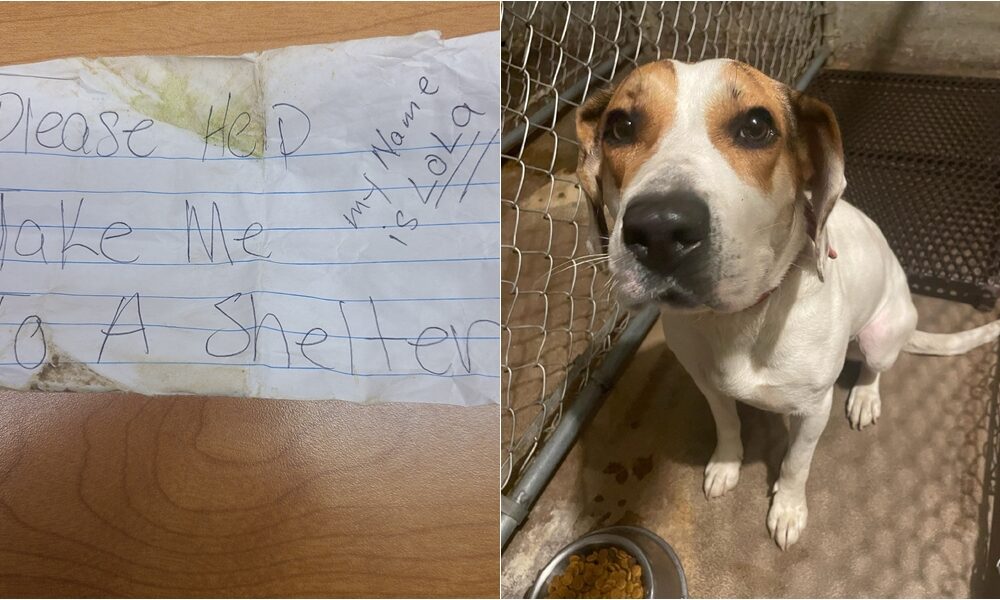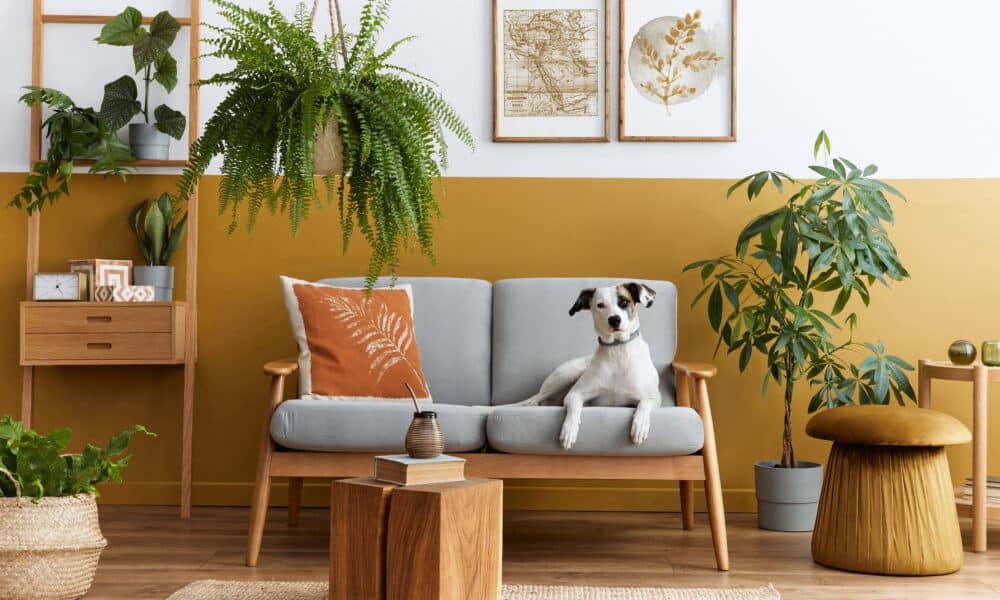
Dog owners have affectionately referred to their four-legged, furry friends as their “fur babies”. And “plant parenthood” was all the rage in 2021, with over 60% young Americans growing their plant collection over the pandemic!
“Dogs are the new kids and plants are the new pets” – are words that perfectly sums up this shift in the narrative on what it means to be a parent.
So, if you are living the best of both worlds, then it’s important that you only take care of plants safe for dogs.
Dogs and plants, together, reduce our stress levels and promote positivity. They are a perfect combination for a happy life, as long as you know how to properly and safely share your home with both.
However, not all plants are safe for your furry friend – there are certain plants that you cannot keep in the comfort of your home because they’re toxic to dogs (and pets in general).
So, in this article, we’ve listed down 10 indoor plants safe for dogs, so you can enjoy the company of your pooch and find the best indoor foliage!
10 Indoor Plants Safe For Dogs
Whether you’re growing your plant collection or just beginning your plant journey, there are a variety of plants safe for dogs for you to choose from.
So, without further ado, here are 10 of the best and most beautiful pet-friendly foliage for your home.
1. Spider Plant
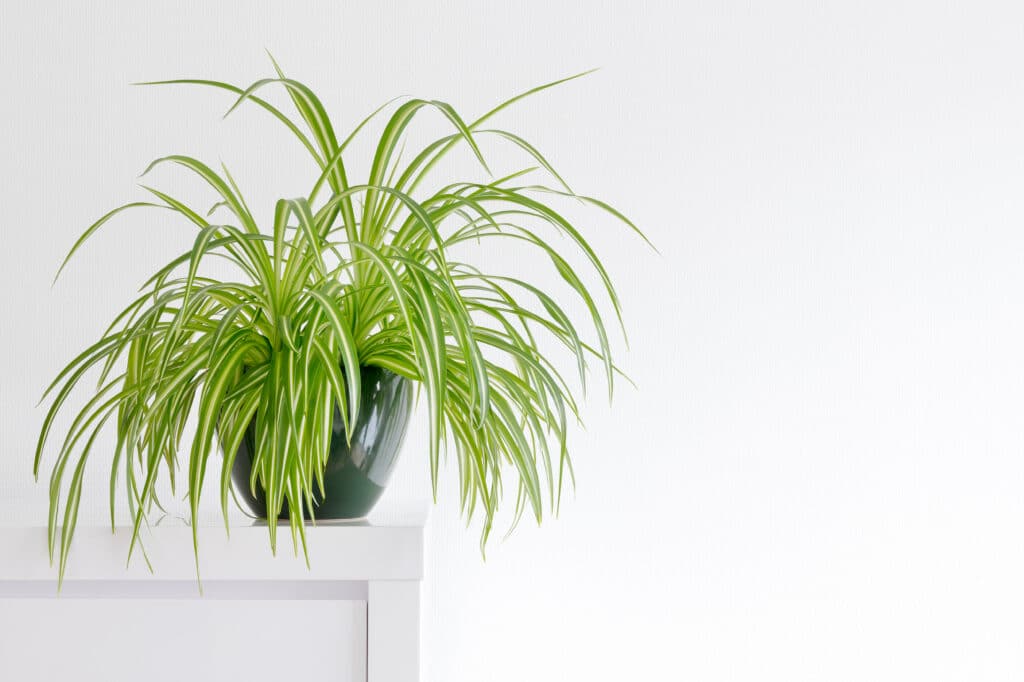
The spider plant (Chlorophytum comosum) is not only among the plants safe for dogs, but is also one of the most popular indoor plants.
And it’s easy to see why! This leafy beauty is very easy to grow and take care of. If you’re only getting into plants, then we recommend this for your first plant.
Furthermore, due to their cascading nature, they are great for hanging up high in floating shelves or hanging baskets.
How To Take Care Of A Spider Plant
As mentioned above, taking care of a spider plant is fairly easy. This air purifying indoor plant doesn’t like direct sunlight, because it can burn their leaves. It thrives better in indirect sunlight or partial shade.
2. African Violet
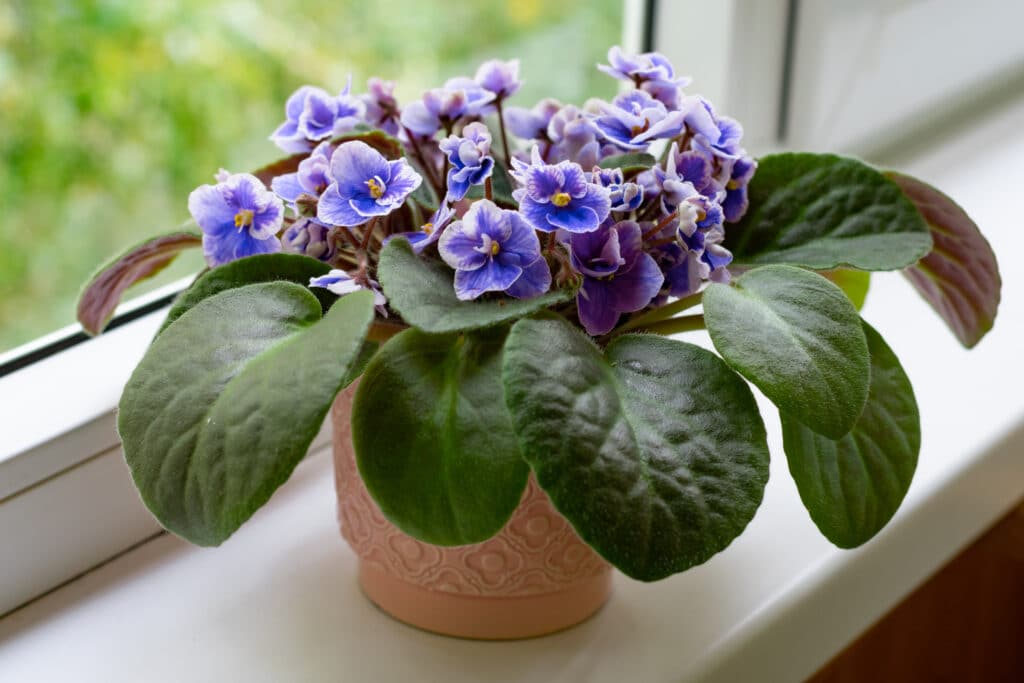
The African violet (Saintpaulia) is a colorful and pet-friendly plant addition to your home. These flowering houseplants are very popular, even among pet parents.
Their blooms are gorgeous and they can light up and bring color to any space in your home. And the best part? They’re low maintenance!
How To Take Care Of An African Violet
African Violets bloom in bright, indirect light and can easily thrive in environments that people generally like – moderate temperatures and average humidity. They will also need moderate watering and since they bloom, fertilizer is a must!
Important note: In choosing a fertilizer for this plant, make sure to choose a natural or non-toxic option. While the plant itself is non-toxic to dogs, there are fertilizers for this plant that are dangerous for dogs.
3. Prayer Plant
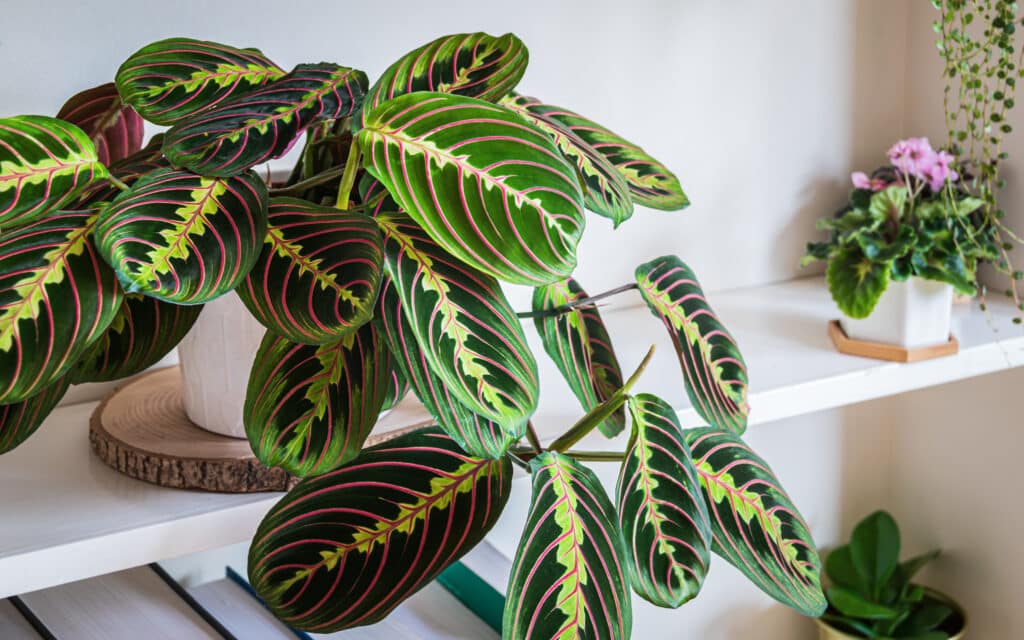
The Prayer Plant (Maranta leuconeura) got its name from it’s unique “habit”. Its leaves curl up at night when the sunlight fades, making them look like hands folded in prayer.
This non-toxic indoor plant is perfect for those who wants a subtle color and unique patterns in their indoor foliage. Furthermore, it is ideal for small spaces, like end tables or bookshelves.
How To Take Care Of A Prayer Plant
This striking striped houseplant needs moderate care at best. This plant thrives well in medium to low indirect sunlight. And unlike previously mentioned plants safe for dogs, the prayer plant prefers humidity. And you should not let the soil of this plant completely dry out, because this will cause problems.
4. Orchid
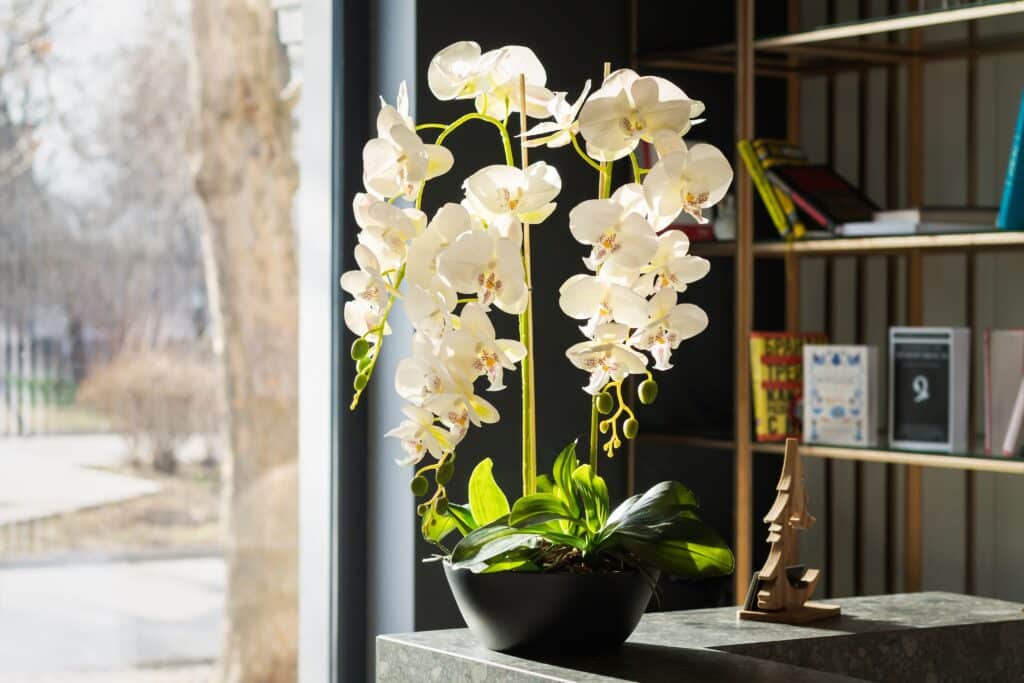
If you’re looking to elevate your living space with plants safe for dogs, then orchids (Orchidaceae) are just what you need.
While they are undeniably beautiful plants, they can be a bit difficult to grow. So, if you’re just starting your plant journey but really want orchids, then choose the variation that is easy to grow, the moth orchid.
How To Take Care Of An Orchid
Orchids are known for being “difficult” to care for. But in reality, they’re not. They just have different care instructions than most plants.
Commonly, orchids need a special potting mix and do best in partial, low light. You need to water them once a week and provide them the right amount of humidity to help them thrive. Furthermore, they need monthly feeding with a fertilizer designed for orchids.
Important note: While orchids are non-toxic to dogs, you have to be careful about the fertilizer and potting mix you use. An orchid’s potting mix is often made of tree bark, which is not toxic, but can cause stomach irritation if ingested.
5. Rattlesnake Plant
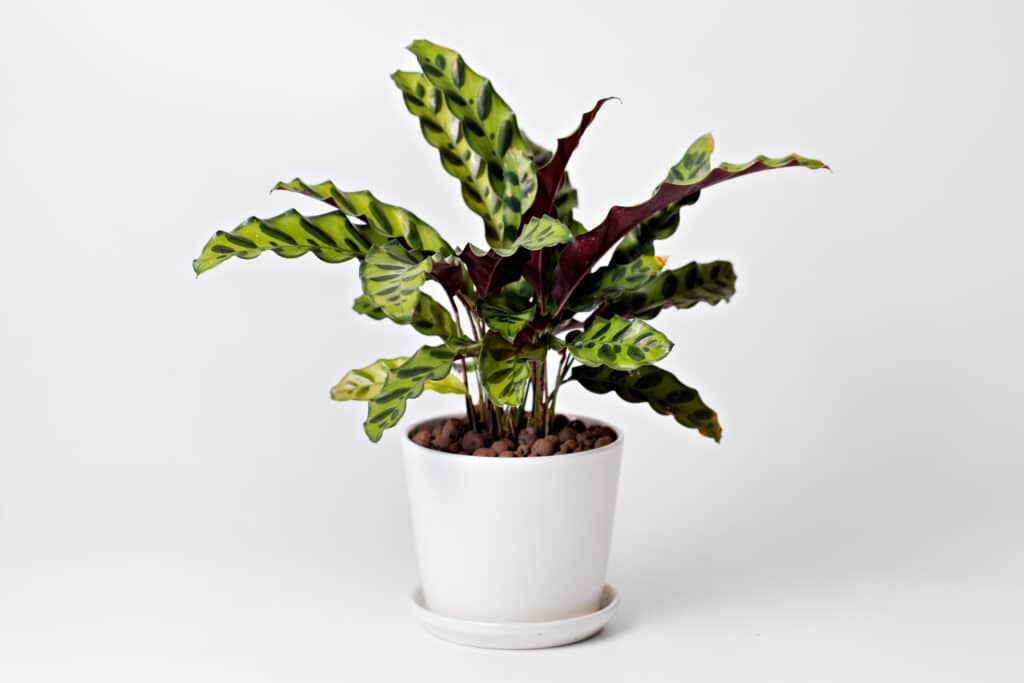
A uniquely stunning foliage that resembles a rattlesnake’s tail, the rattlesnake plant (Calathea lancifolia) is another indoor plant that is safe for your pooch. The unique and distinctly-shaped leaves of this plant makes it a great addition to your living room.
How To Take Care Of A Rattlesnake Plant
Taking care of a rattlesnake plant can be tricky. But if you provide it with the proper care it needs, you will be rewarded with a vibrant, beautiful, and impressive display of foliage.
It thrives well in medium, indirect sunlight and needs watering when the top of the soil feels dry to the touch. And since it is native to the rainforest of Brazil, it prefers areas with high humidity such as a well-lit bathroom or kitchen.
6. Echeveria
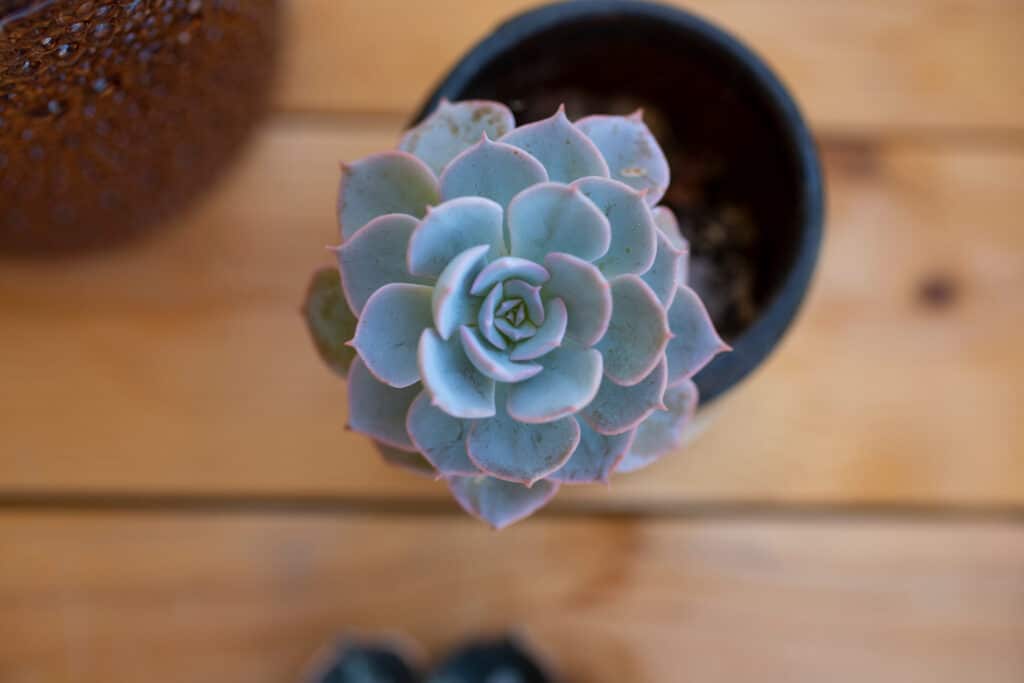
Succulents are very popular houseplants since they’re easy to take care of. However, not all succulents are safe for dogs. There’s only a number of these plants safe for dogs. And one of them is the echeveria.
Echeverias are beautiful succulents that grow rosettes and varies in colors such as blue-gray, gray-green, green, purple, and even red! Furthermore, they don’t grow bigger than one foot in height or diameter so they’re perfect as table decors.
How To Take Care Of An Echeveria
Echeverias are known to be low-maintenance plants. However, they like bright light and should be given about four to six hours of it a day.
Furthermore, an echeveria is extremely sensitive to overwatering and will most likely suffer from it. So, only water it when the soil is completely dry, which can be in about one or two weeks’ time.
7. Polka Dot Plant
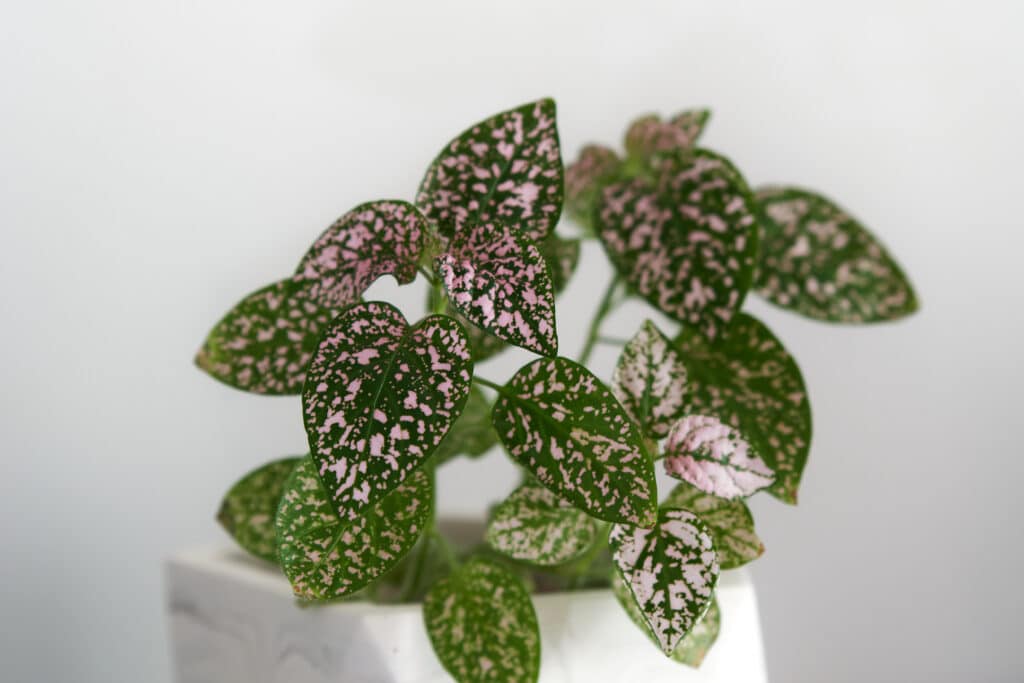
Want to add a splash of pattern or color to your living space? With its green, pink, white or red colors, the polka dot plant (Hypoestes phyllostachya) might just be what you’re looking for!
This adorable yet striking houseplant grows up to three feet tall outdoors. But in a pot inside your home, it grows only about 10 inches tall.
How To Take Care Of A Polka Dot Plant
The polka dot plant likes bright, indirect sunlight. And it needs a moderate amount of moisture in its soil all the time. Furthermore, it likes humidity, so keep it in a place with at least 50% humidity.
8. Bromeliad
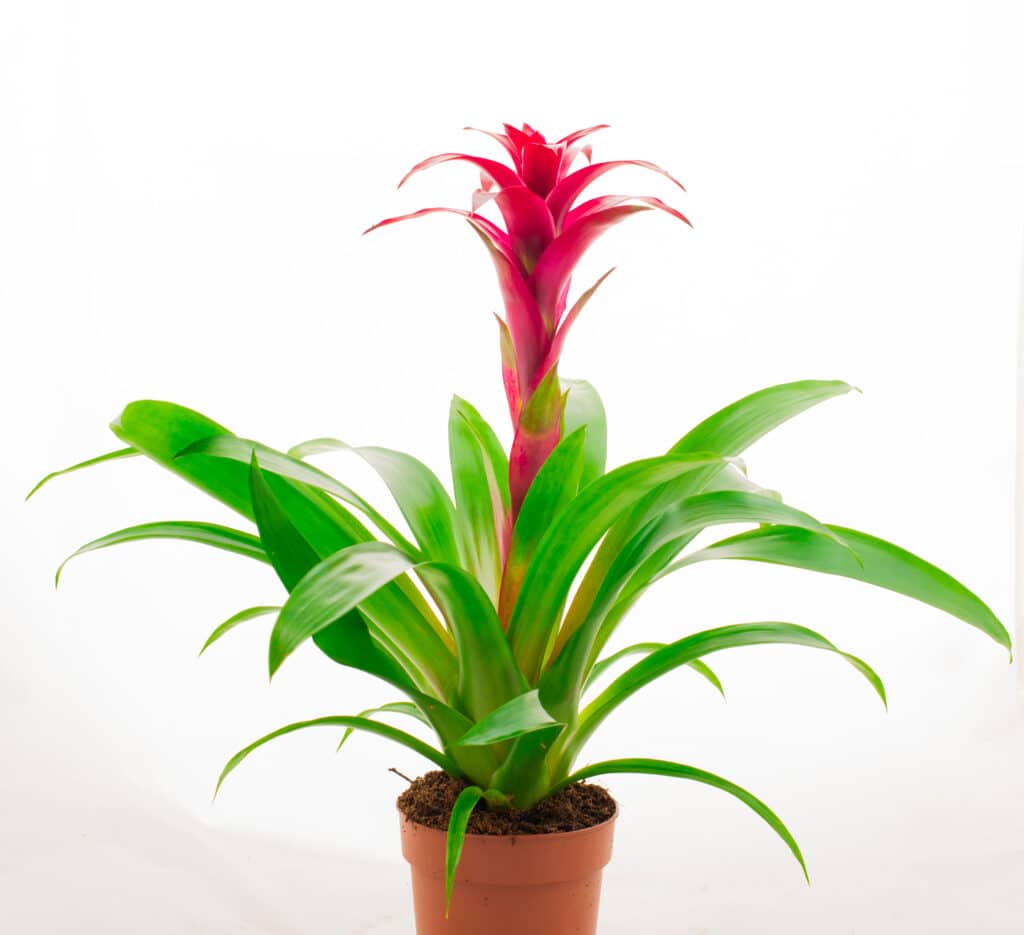
Bromeliad plants (Bromeliaceae) are another popular plants safe for dogs. And it’s easy to see why they’re so popular among plant enthusiasts!
This houseplant produces an attractive flower in the middle, whose form and color may be different, depending on the variety. So, they’ll add a splash of color to any space you put them inside the house.
How To Take Care Of A Bromeliad
A bromeliad is easy to take care of and is something beginner plant enthusiasts can add to their collection. They thrive in areas with constant airflow, so putting them in an area with windows, like the living room or the bedroom, is ideal.
Furthermore, they need bright, indirect sunlight and a humid environment to thrive in.
9. Boston Fern
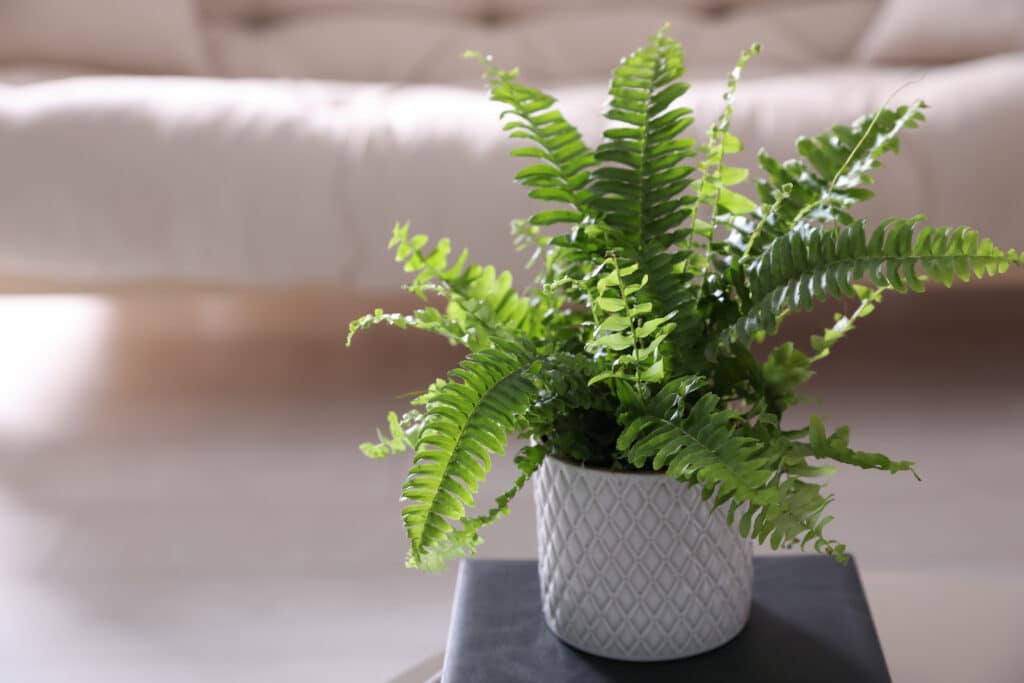
The Boston fern (Nephrolepis exaltata bostoniensis), also known as sword fern, is a houseplant favorite. Aside from being low maintenance,it is among the plants safe for dogs.
While this lush and beautiful plant can be in pots, it can look particularly great in a hanging basket.
How To Take Care Of A Boston Fern
A Boston fern is easy to maintain and take care of. It thrives with indirect light and high humidity. So, they are well-suited as bathroom plants because of the humidity. Furthermore, their soil should also always stay damp, especially during spring and summer.
10. Ponytail Palm
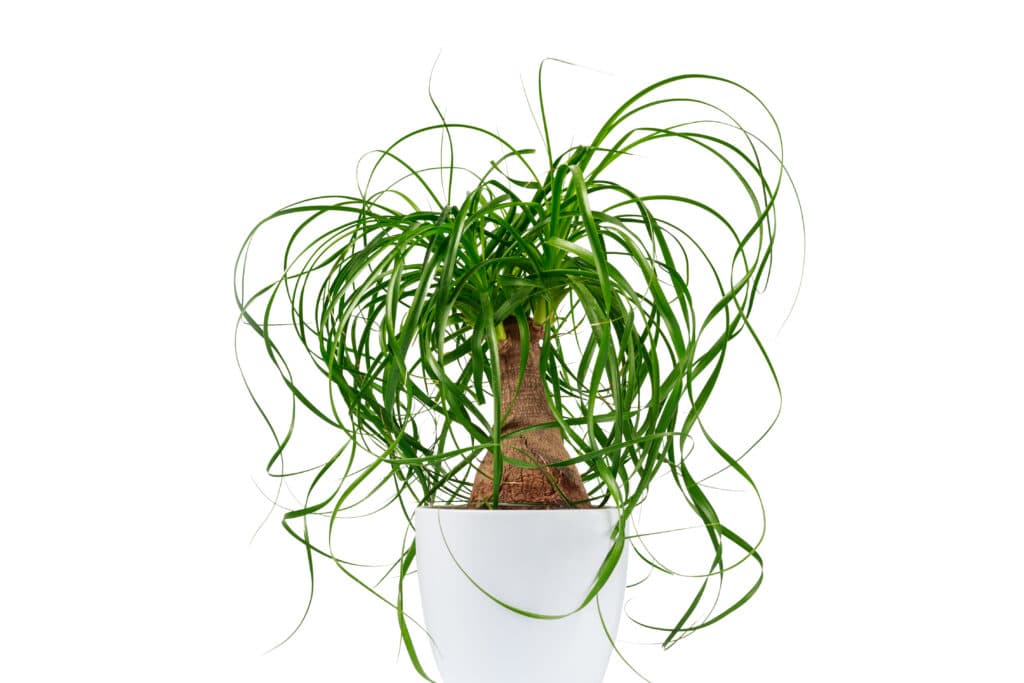
The ponytail palm (Beaucarnea recurvata), also known as the elephant’s foot, is another popular indoor plant that is easy to grow and maintain.
Their long and thin fronds are especially attractive to pets. But thankfully, they are plants safe for dogs.
How To Take Care Of A Boston Fern
Since a ponytail palm requires dry soil, they do not require frequent watering. They thrive well in bright, indirect sunlight and only needs to be fertilized twice or thrice a year.
Indoor Plants To Avoid As A Dog Owner
There are a lot of plants that are not safe for your pooch. While they are beautiful and can elevate your living space, they can pose a great threat to your dog’s health. Some of these plants are:
- Snake plant
- Swiss Cheese Plant
- English Ivy
- Photos
- Philodendrons
If you want to check if a plant is safe for your dog or not, you can check out the American Society for the Prevention of Cruelty to Animals (ASPCA)’s extensive list of toxic and non-toxic plants here.
Conclusion
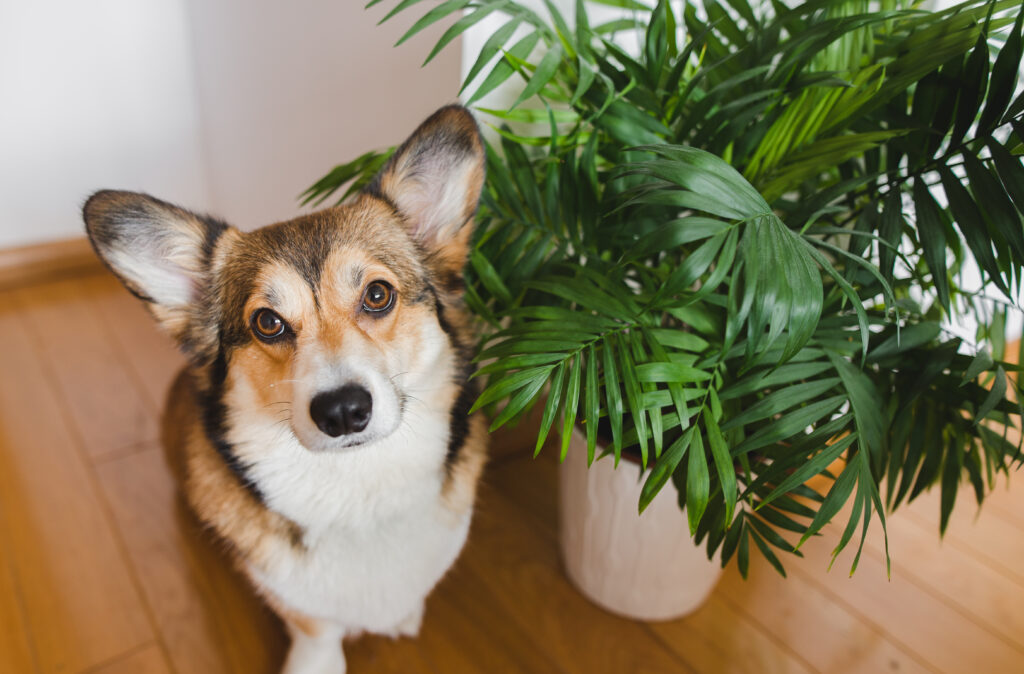
There are a plethora of indoor plants to choose from in order to beautify your home. But as a dog parent and a plant enthusiast, this means choosing plants that are only safe for your beloved pooch.
We hope that the list above gave you an idea on what plants to add to your pet-friendly foliage at home.
Are there any other plants safe for dogs that didn’t make our list? Share them in the comments below!


